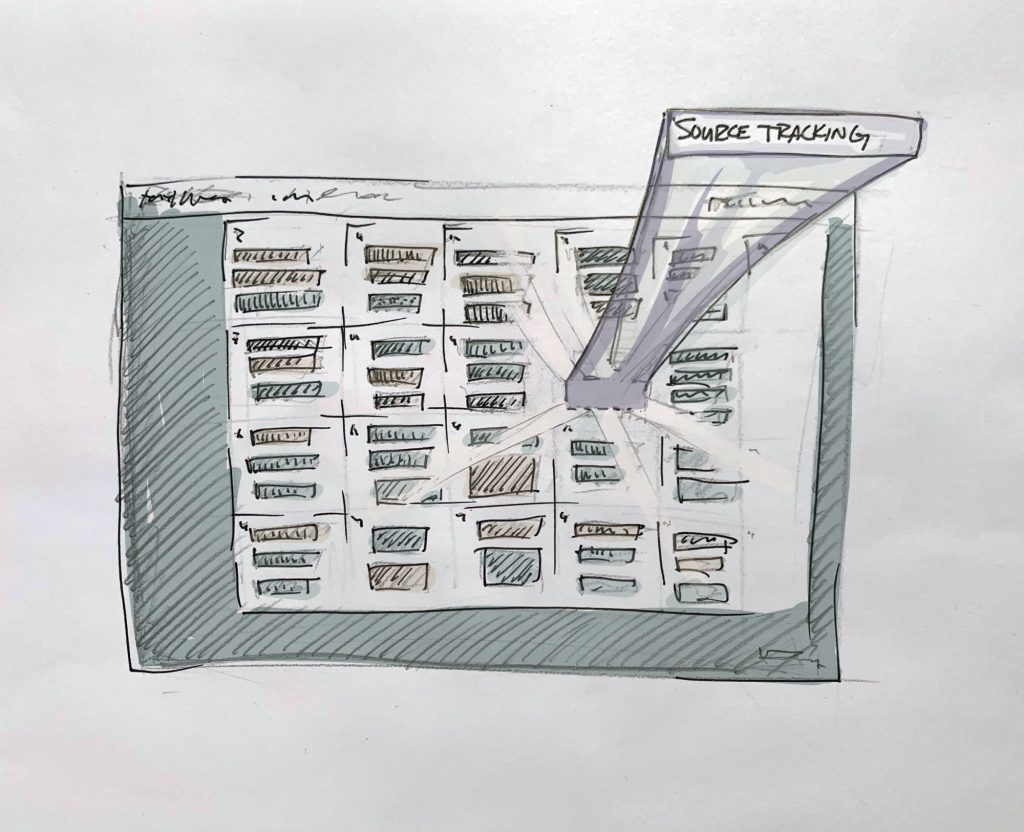

CHALLENGE #2: TIME
You’ve got a good amount of buy-in, but when push comes to shove, how do people fit it into their already overstretched schedules?
Time is one of a journalist’s most precious resources, and even if you already have buy-in, you’re about to ask people for some of their time, regularly, indefinitely. It’s your job to be empathetic about this very real challenge, and help make things as easy for them as possible.
Make it easy to understand and fast to do
These same guidelines apply when you’re rolling out any new process or workflow.
- Demonstrate, demonstrate, demonstrate. Show people how seamless the process can be. Do screen recordings or use screenshots in your training/onboarding materials to help folks visualize the flow of the new process.
- Come up with clear examples of when to use the new source tracking tool
- You’re a reporter who just got back from traveling for a story, while away, you developed several new relationships with sources you’ll want to rely on in the future.
- You’re a photographer who just covered PRIDE and you have dozens of folks to add to the database.
- You’re an editor whose reporter filed an all-white, all-male sourced story about a marginalized community and you need to send the reporter back out for more nuanced sourcing.
- Timebox. When you’re teaching people how to use the tool, also give them a clear sense of how much time they should be spending on it.
- Spend no more than 1 min emailing and recording each source
- Instead of doing source tracking for an hour once a week, do it in real time daily, etc
Tell people what they can do less of, in order to create time to track sources
- Bring together a group of staff (some editors, some reporters), or meet team by team if you are in a larger org.
- Brainstorm tasks that journalists commonly have to complete that could be eliminated or deprioritized to focus on source tracking.
- Editors and reporters must work together, and across teams even when working with multimedia journalists or others, to maintain the balance between a massive backlog and running out of time to keep the source tracking up to date.
- Everyone will can benefit from source tracking: a journalist who knows they’re missing source diversity early in the process can course correct sooner, rather than having their editor send them back out for another round of reporting
Latch onto your existing habits
When I was a young web producer on a small, emerging digital team, I was tasked with “getting the newsroom onto Twitter.”
“When will I find time for this?” was the #1 question I was asked because folks were thinking of it as a Dreaded Task. Something time consuming or fiddly, something that wouldn’t benefit their work immediately and something that ultimately might just have been a passing Internet fad (remember when we were all freaking out over who had 10 invites to Google Wave??).
Expenses are a workflow that many people treat this way: accrue as much as possible, then spend an afternoon or a few hours one night hammering it all out.
That’s not what you want for source tracking workflow.
A great way to frame source tracking tasks is as a skill and a habit that you do on instinct, like wiping your feet when you walk through a door or excusing yourself when you need a restroom.
Another way to tackle source tracking is to frame it as a necessary check on source diversity BEFORE going to publication. Tracking sources in real time, for example, could help a reporter and editor see all white or mostly make sourcing while there’s still time to make different choices.
And there’s science to back this up: it’s called Habit Stacking. It turns out I was onto something in my early Twitter training days, as there are books and papers written on this very topic.
I used to challenge my colleagues to think of habits they already had, things they already did every day, like using the restroom, refilling a water bottle, grabbing a cup of coffee or taking a smoke break. These aren’t necessarily big tent pole events of your day that require you to pass on a story or reschedule an interview. They are tasks that just generally get done without you having to think too hard or too much about them.
- When you check your slot in the mailroom, come back and track your sources.
- When you refill your water bottle, come back and track your sources.
- When you go for a walk between meetings to clear your head, come back and track your sources.
- After you file your draft and you’re waiting for your editor to read it, come back and track your sources.
- Zoom meeting gets canceled at the last minute? Great! Now you’ve got 15 minutes to update your source tracking.
When learning a new habitual skill, like source tracking, it’s important to make it feel easy and accessible.
Encourage folks to make it part of their end of day ritual or post-deadline wind down routine. But the idea should be: every time a journalist meets a new source and cites their voice in a story, that source gets added to the tracker within 24-48 hours (within reason, of course).
PICK YOUR NEXT STEP ⤵
This practical playbook was created by Emma Carew Grovum, Sisi Wei, Will Lager